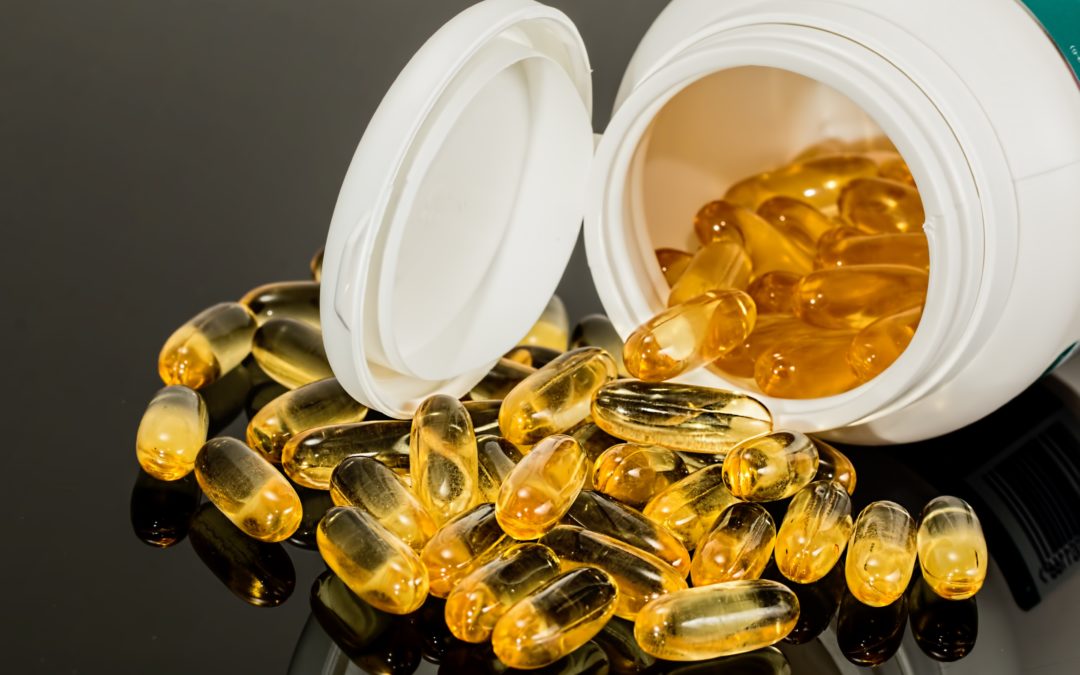Omega-3 Fish oil: You have probably heard that you should be taking it to improve your recovery, to decrease inflammation, to improve brain function, and even to prevent and manage heart disease and blood pressure.
Many of you might already be taking some brand of Omega-3 fish oil. According to the National Centre for Complementary and Integrative Health, more than 18 million people in the United States spent more than $1.3 billion on fish oil in 2012 alone, so the word is obviously getting through to people about its positive health benefits.
But all this time, there’s a good chance you have been taking it wrong…Mic drop!
What I mean is the type and dosage of fish oil matters, and varies from person to person depending on a few factors. Before we go into that, though, let’s talk a bit about what fish oil is and how you can get it into your system.
DHA versus EPA: Omega-3 fish oil contains both DHA (docosahexaenoic acid) and EPA (eicosapentaenoic acid) fatty acids that your body wants and needs. Specifically, DHA is known for boosting brain function, while EPA contains more of the anti-inflammatory effects.
Foods with DHA and EPA: Great food sources that also contain these two fatty acids can be found in salmon, sardines, herring, mackerel, tuna, trout, swordfish, and cod, among other fish. On average, one 100-gram serving of most fish contains around 1 gram of Omega-3 fatty acids. Atlantic salmon and mackerel are a bit higher: They’re closer to 2 grams of both EPA and DHA per 100 gram serving of salmon.
Here’s a snapshot of various fish and the exact amount of both EPA and DHA they have:
All this is to say, if you eat a lot of fish (more than 3 or 4 days a week), you might be getting enough fish oil from your diet. But if you don’t eat fish and have other needs, there’s a good chance you’ll benefit from a fish oil supplement on top of what you’re already getting from your food.
Let’s talk dosage:
Traditional Fish Oil Dosage Suggestions
There are various reasons to take fish oil. Some take it to improve their cardiovascular health, others to improve their joint health, and others still to improve their attention and concentration.
According to various clinical studies, here are the amounts of fish oil you should consider taking depending on your needs:
Heart Health: 600 – 4,000 mg (0.6 g to 4 grams) of combined EPA and DHA.
To Improve Mood: At least 1 gram of EPA per day. The oil you choose should be higher in EPA than DHA.
To improve concentration and focus: 500-1,000 mg (0.5 to 1 g) of EPA per day. This is also useful for children over the age of 5. Again, the oil you choose should be higher in EPA than DHA.
Bowel Health: 2,000-4,000 mg (2-4 g) of combined EPA and DHA each day.
Respiratory health: 2,000-4,000 mg (2-4 g) of combined EPA and DHA each day.
The above dosages are pretty standard and accepted; however, there are many other (perhaps more progressive and aggressive) nutrition gurus out there who recommend taking much larger doses.
Alternative Dosage Suggestion:
Robb Wolf—the author to the Paleo Solution (https://robbwolf.com/)—recommends taking 0.5 grams of EPA and DHA PER 10 POUNDS OF BODYWEIGHT. And if you’re recovering from an injury, are overweight, stressed out, not sleeping well or have a poor diet, he even says this can be upped to 0.75 to 1 grams per 10 lb. of bodyweight!
This means if you weigh 150 lb., then:
- Divide 150 by 10 = 15
- 0.5 g (of fish oil) and multiply that by 15
- 0.5 x 15 = 7.5 g
Thus, for maintenance, he suggests you take 7.5 g of fish oil each day. Considerably more than the old-school requirements, but might be worth doing and seeing how you feel.
What about brands?
One thing to consider is where is the fish from your oil is coming from (i.e. environmental contaminants). The same way you don’t want to consume fish caught in ocean areas that are contaminated, you don’t want your oil to come from there either.
Also, some fish, especially the longer-living species—usually the predators that eat other fish—accumulate contaminants in their bodies‚ things like heavy metals, such as mercury, arsenic, cadmium and lead. It goes to say that these contaminants can end up in fish oil, which will do more damage than good if you consume them.
What all this means for us is that when looking for a fish oil supplement, it’s best to look for one that has been highly purified. Also take a look and see if the product is third-party tested, which essentially means that an independent organization looked at the manufacturing process of the product being certified, and determined that the final product met its standards for safety, quality or performance.
Two other things to consider are:
•Freshness
•Form
Freshness: If you’re buying fish oil in oil form, as opposed to capsules, freshness can be determined by how translucent the oil is. It should be quite translucent and free from cloudiness or “floaters.” Second, the taste: The fresher it is the least fishy it should taste.
Form: Omega-3s are naturally found in the triglyceride form, but often times cheap fish oils are sold in an ethyl ester (EE) form, a semi-synthetic form that are harder for your cells to absorb. Thus, you want to strive for the triglyceride form. Good brands usually list this somewhere on their bottle. If you want to get really nerdy and dig more into this, check out this research that compares the two forms.
With all that being said, one really good brand that is sourced from short-lived species—anchovies, sardines and mackerel—which don’t feed on the bottom so they pick up less contaminants, is BrainMD’s Omega-3 Power.
Another couple great options are Nordic Naturals ProOmegaD and Sport Research Omega-3 Fish Oil, which also comes with a 90-day money back guarantee.
There are many other good brands out there. What’s most important is to do some research into the product and be aware of EPA to DHA ratios, freshness, triglyceride form, and, of course, figure out the right dosage for your needs.

